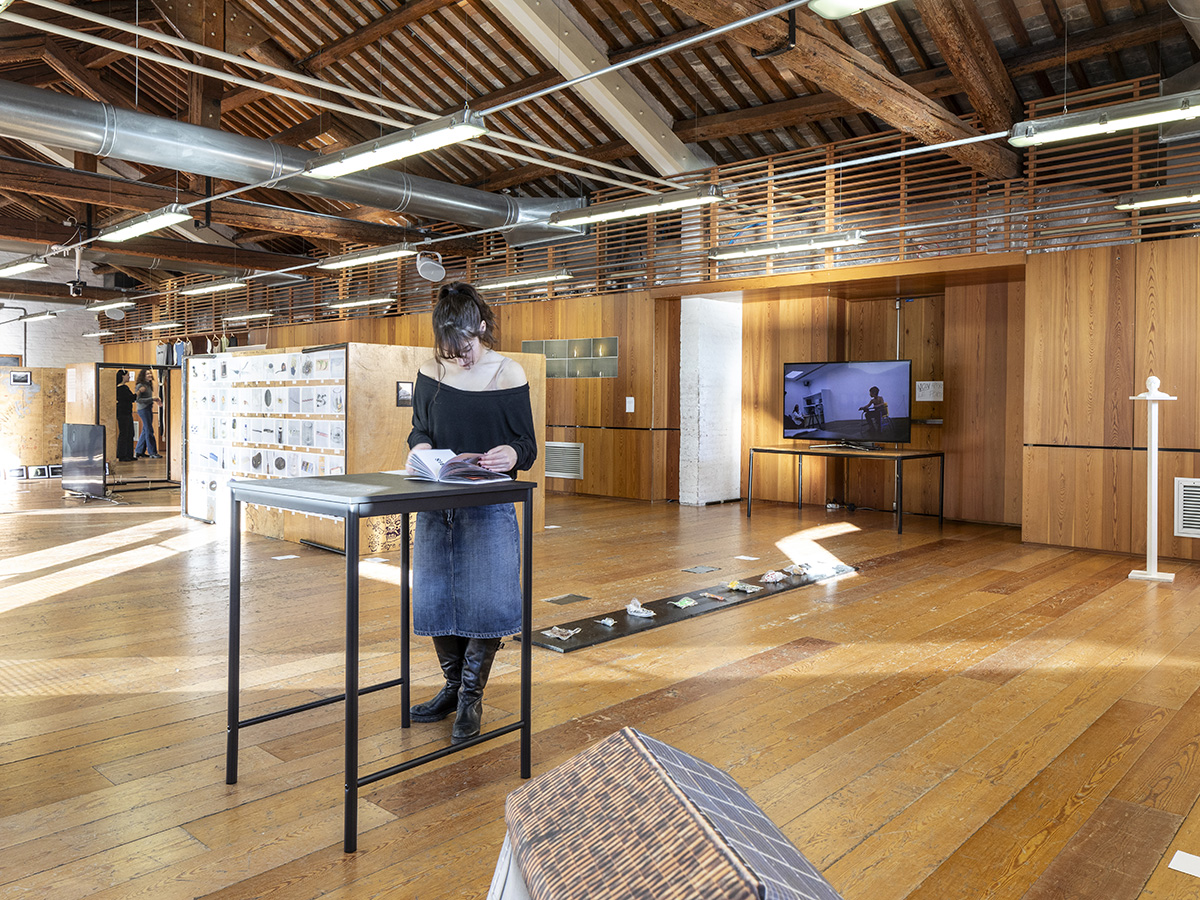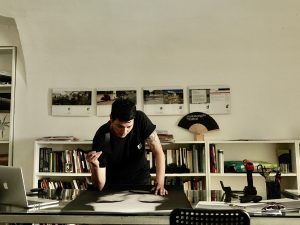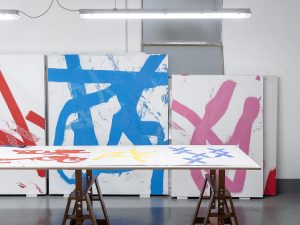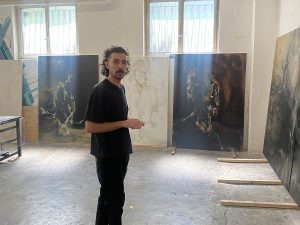Over the last few decades, a number of economic, social and cultural phenomena have challenged the power of criticism, from both the ‘inside’ and the ‘outside’. These involve the rise of the postmodernist vulgate, on the one hand,and poststructuralist thinking, on the other; the spread, since the 1990s, of the anthropological paradigm, the turn introduced by the transversality of visual culture studies, the revival of feminist orientations and debates on gender issues, such as the issue of deculturalisation. Every opinion must be preceded by a questioning of the systemic prejudices that determine it. Otherwise, any critical judgement risks appearing to be an act of domination and blind power.
On the other hand, globalised neoliberalism, which in the knowledge economy (from the university to private companies) has achieved the tertiarisation of work and precarity, has generated a hyper-production of cultural opportunities aimed at a progressively larger audience of consumers and tourists. This, in turn, objectively makes free, autonomous, independent — and thus, uncompromised — criticism increasingly difficult. In addition to this, the ‘software society’ of digital applications has started to give shape to alternative worlds. This means that each individual can immediately find comfortable answers to their own cultural interests, conforming to their own identities, and so they can avoid having to engage with different and alternative dimensions. These are widespread views — but let’s try to get down to the practicalities.
We know that the enjoyment of a work of art (and purchase is a special form of enjoyment) involves engagement with a ‘frame’, as Judith Butler states in one short but intense intervention: ‘The frame is a physical object, sometimes more conspicuous, sometimes more elusive’, Butler writes. ‘But — at least in museums — the artwork is framed not only by the solid material that delimits the image, but also by the room, the wall, the light, the hooks on which it hangs … Curators well know that the painting, the sculpture, the drawing is framed not only by the objects and people that surround it, but also by the captions that ‘contextualise’ and ‘interpret’ it for the viewer. Not to mention the processes of artistic acquisition, the economic and logistical aspects underlying the transfer of the work … So, one enters the museum with the expectation of a pure experience, which, as I said, is based on specific mechanisms of repression’.[1]
Avoiding this action of ‘repression’ and translating things, we would hope that the critical act (text, gesture, voice…) does not have a frame — yet it does possess one, and seems to be articulated in a complex but concrete way in the body of both public and private institutions. The question then arises as to how critical space finds shelter within the institution, and how criticism as a form of power (in the Gramscian sense of hegemony) can assert itself therein, according to types of practices apparently destined to meagre visibility and which may be perceived as ‘secondary’ but which are in fact effective, taken as a whole.
With the pervasive spread of exhibitions understood as a cognitive appointment — one in which new paradigms can be enunciated and the languages of the contemporary and its protagonists can be publicly expressed through the involvement of historical venues, museal and even ‘non-art’ spaces — the curator’s increasingly visible role appears to have changed. From being an independent figure, a ‘fellow traveller’ of artists,[2] the curator has become the focus of a training framework, produced through the first courses in the 1990s, leading to her subsequent contractualisation within institutions. The range of her tasks expands according to the dimensions and the characteristics of these same institutions: she is no longer, therefore, a mere exhibition maker, but a person in charge of the educational programme, of cultural activities in the virtual and digital dimension, of in-depth talks, an art director, trainer, lecturer, activator of material in the archives and so on. The increasingly professionalised curator, therefore, specialises by implementing a complex system of necessary ‘mediations’.
As Nathalie Heinich suggests: ‘To borrow two of Pierre Bourdieu’s concepts, the importance of mediations grows in direct proportion to the degree of specialisation and creative innovation or “autonomisation” of the “artistic field”. These may be verbal or written mediations (reviews, articles, books, theses, contracts, etc.), but also iconic mediations (reproductions), professional mediations (critics, conservators, gallery owners or producers of works), institutional mediations (galleries, museums, public or private art centres, etc.) or material ones (museum and gallery walls, posters, pedestals, frames, catalogues, archives, etc.)”[3] .
These mediations, now identified from a sociological point of view, can become ‘microforms’ of critical space within institutions. We need only imagine activities such as: free discussion with an artist, collaborations for seeking funds, engagement during studio visits, the organisation of official exhibitions, alternating with more experimental ones; or moreover, writing texts with differentiated spaces and autonomies, the planning of popularisation, reading and offering books to the public, and dialogue in dialectical engagement with administrative hierarchies and political structures.
Interpreting some of these practices more radically, along the lines of James Scott’s writings, we may infer that they construct a secret, hidden discourse, alternative to public and official discourse, indeed potential actions of resistance within micro-spaces of autonomy.[4]
Micro-criticism, from within, can produce unexpected connections and outcrops. As they take concrete form, encounters, choices, bodies in relation, actions, dialogues, and passions will shake up prejudice, short-sighted decision-making, propagandistic blindness, a — sometimes soporific — bureaucratic automatism, the system built on connections and lobbying, as well as the disinterest and delegation that removes responsibility.
As Gilles Deleuze and Felix Guattari argue in Kafka. Toward a Minor Literature,[5] perhaps there is a ‘minor criticism’ that acts in these forms, creating unpredictable concatenations that, by deconstructing the official organisation of things, render it porous and more open to this criticism’s influence.
This articulation of practices, which can still be defined as curatorial and close to contemporary art knowledge but which are certainly more constructive, experiential, and relational, can be experienced in many places: In listening to the guided tour of Peng Zuqiang’s work at the Fondazione Sandretto Re Rebaudengo, or in the set-up of an exhibition at the GAM in Turin, in the cultural mediator of the Biennale or in the passion of the Musei Civici conservator who defends their authoritativeness in an information sheet. In the article written by a curator at the Mart or in the research of a PhD student working on a woman critic who has remained virtually overlooked. Or indeed, in the lecture to visiting students, in the outstretched hand to help the artist experimenting with her passions, in the partnership responding to a ministerial call for contributions.
Micro-criticism accepts that it is not authoritarian, dominant, discriminating. But it acts, frayed, within the meshes of a complex, political, economic, hierarchical and administrative system. Of course, micro-criticism acts effectively if the subject within the institution manages to carve out a personal space — even outside the multiple possible roles — for the free exercise and growth, training and updating of skills.
In the privacy of our interests, we read about the ‘metamorphic’ in Emanuele Coccia, the concept of debt and consumption in David Graeber, dysphoria mundi in Paul B. Preciado (read it!), Donna Haraway’s Chthulucene, aspects of critical formation in bell hooks, David Toop’s ocean of sound, and so on. We address everything we consider an update on contemporary thought. But such knowledge will articulate itself, virally take hold in the subjectivities that somatise, move, shift, act, choose, respond, in the secondary rivulets of the activities of the work and the post to which we are called.
At the hands of this curatorial attitude, the official space of the institution is critically stimulated to enter the fray, to make itself available for practices that reach from the organisation to the relational, to the dimension ‘in common’ and that, therefore, are not limited to descend from a curator understood as a deus ex machina: an ‘Uber Curator (German word), who has the total control over exhibitions, product of system of power, fame, and cartels; the curatorial operation inevitably goes through a complex process of negotiation between different creative practices, institutions, stakeholders. This process opens up different possibilities for a new mode of knowledge production and dissemination … This process cannot be claimed by a single author … If the ownership shifts to the visitors, the Uber Curator becomes vulnerable. In this sense, curatorial research can only be completed by visitors’ practice of commoning the curatorial operation’.[6]
[1] J. Butler, Perdita e rigenerazione. Ambiente, arte, politica, Venezia, Marsilio, 2023, pp 25-27.
[2] ‘In the 60s the curators were just friends of the artists, companions on the road, they accompanied the artists along the way, part of the making of art (very different was, for example, the figure of Clement Greember’: C. Christov-Bakargiev in (multiple authors), Reclaiming Artistic Research, edited by Lucy Cotter, Berlin, Hatje Cantz, 2019.
[3] N. Heinich, Le paradigme de l’art contemporain, Paris, Gallimard, 2014.
[4] J.C. Scott, Domination and the Arts of Resistance: Hidden Transcripts, New Haven (CT), Yale University Press, 1999.
[5] G. Deleuze, F. Guattari, Kafka: Toward a Minor Literature, Minneapolis, University of Minnesota Press, 1986.
[6] Je Yun Moon, ‘Curatorial Research as the Practice of Commoning’, in (multiple authors) Institution as Praxis, edited by B. Balaskas. and C. Lito, London, Sternberg Press, 2020.





